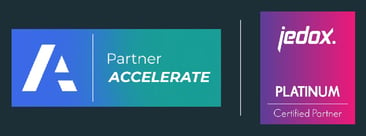In this third in series about the benefits that digital financial transformation we look at how to produce truly action-orientated long-range plans.
In these uncertain times, when even the pundits seem to lack confidence in their economic forecasts, developing a working long-range plan may seems an impossible pipe dream. There is a tendency to ignore anything other than short-term imperatives, such as revenue and cash-flow forecasting, and leave longer-term plans on the back boiler until life gets back to normal. Alternatively, others do engage in long range planning but make an all-or-nothing gamble on what the future may hold and base their strategy on that. In the current environment, both approaches are equally foolhardy. Uncertainty produces discontinuities and those organisations that develop effective long-range plans have a better grasp of the future and can easily disrupt the status quo.
In this article we'll discuss
- Why long-range plans fail
- 5 essential building blocks of successful long-range planning
- Issues with solutions used for long-range planning
- How Connected Planning with Anaplan provides functionality for the entire long-range planning process
why long-range plans fail?
A long-range plan outlines the path for the company's future, setting out financial and non-financial goals, together with a strategy that defines the objectives and actions necessary to achieve them. It sounds simple, but it frequently goes awry. One authority on long-range planning is Donald Sull, one of Fortune magazine ‘10 new management gurus to know’, who criticises most strategic plans as containing little of worth other than some vague aspirations about becoming a global leader in the industry while being nice to employees. A few years back in an article in the Harvard Business Review (HBR), Sull and his co-authors listed three reasons why long-range plans fail:
- Failure to align departmental goals and actions to high level strategy.
- Difficulty in finding a balance between agility and staying the course, with some organisations responding too slowly to fleeting opportunities, while others react too swiftly and make decisions they live to regret.
- That all too often, strategy is still not widely communicated or understood within the company.
To thrive during periods of uncertainty, Sull suggests companies need to ‘seize the moment’, but stresses that it requires actively waiting for opportunities to arise, being thorough, prepared to strike while the iron is hot, and exceptional agility in fine tuning strategy and tactics along the way.
5 essential building block of successful long-range planning
Such capabilities do not arise by wishful thinking. They need to be systematically built on a foundation of core FP&A processes involving a number of individual steps that run right across the organisation. These are summarised in the table below.
|
STAGE |
DESCRIPTION |
OUTPUT |
|
Exploration |
Analysis of the current business and how internal and external changes are creating new opportunities and threats |
Limited number of potentially viable strategies |
|
Evaluation |
Evaluation of options to ascertain which are financially viable and what strategic capabilities the company needs to develop to be successful |
Chosen strategy |
|
Planning |
Translating strategy into strategic imperatives and detailed financial and operational plans |
Long range plans and budgets, CAPEX etc. |
|
Communication |
Cascading the strategy down the organisation |
Aligned action plans and annual budgets |
|
Monitoring |
Continual monitoring of all the assumptions that underpin the strategy and the key performance indicators that need to be achieved to successfully implement it |
Tracking of progress and early warning of changing conditions |
As the HBR article mentioned above suggests, failure to adequately address any of these five steps will result in failure. Sometimes companies become too focused on their existing markets and fail to explore disruptive technologies that rapidly make their products and services obsolete; at other times companies hit on a great strategy but poor communication and slow implementation means they are soon overtaken by competitors who are more fleet afoot. Many find their ability to develop and execute effective long-range plans is compromised by technology.
issues with solutions used for long-range planning today
Because of the diverse activities involved at each stage of the long-range planning process, many companies resort to using spreadsheets and packaged planning and budgeting applications for the first part of the process and dashboards, and sometime balanced scorecard solutions, for the final couple of steps. However, spreadsheets are laborious to use, error prone and not at all conducive to collaboration, while packaged applications tend to be inflexible and ill-suited to the ad-hoc modelling needed to evaluate different strategic options. Having to export data into a balanced scorecard or dash-boarding tool for communication and monitoring simply adds to the complexity, so that updating long-range plans becomes a major undertaking. No wonder they often get consigned to the back of the drawer.
However, now there is an alternative.
Why Work With Profit&?
The Anaplan platform delivers connected planning with the functionality and flexibility required at each stage of the strategy formulation and long-range planning process. Because it is a solution that can be self-managed by finance users, they can build and maintain models themselves, manage the complex and overlapping relationships between the changing business entities over time and quickly update key variables such as cost of capital, depreciation methods, taxation rates and exchange rates. They can also quickly integrate data from other parts of the business to see the recent history of the key drivers that underpin assumptions in the longer-term strategic planning model.
As Anaplan is designed for self-management, users can quickly create and test new scenarios delivering just the type of agility and understanding that the authors of the HBR article suggest is frequently lacking in strategic planning today. That is important because the uncertainty and volatility on both the revenue and costs side of the equation, means FP&A teams involved in long-range planning should be abandoning fixed point plans and developing dynamic driver-based models, that can be quickly reforecast to generate a range of possible scenarios.
The ability to assess alternative responses to market changes is key, so fast scenario planning means that new plans can be tested on-the-fly, with FP&A professional working with business partners to explore the implications for their own longer term sales and operational plans, iteratively connecting long-range plans with short-term plans and budgets. Anaplan’s Connected Planning platform allows organisations to build transformational planning processes that deliver the capabilities that Sull stresses are imperative for these volatile and uncertain times.
Early adopters, such as Aviva, who use the Anaplan platform for their end-to-end group planning process, aligning and optimising short and long-range plans and forecasts across the 16 countries in which the insurer operates in, have been enjoying the benefits of Connected Planning for some time now. To find out how you could join them read our guide Connected Planning: The Key to FP&A Transformation.
In my next blog, I look at how connected planning improves the productivity and efficiency of FP&A teams.
Get In Touch With Us Today
If you’re interested in seeing how Anaplan can improve strategic long-range planning in your business, don’t hesitate to contact us. We’ll be able to answer all of your questions and explain the processes we use to bring cohesion and effectiveness to planning processes.







